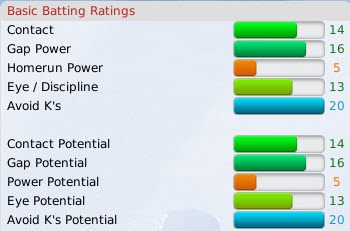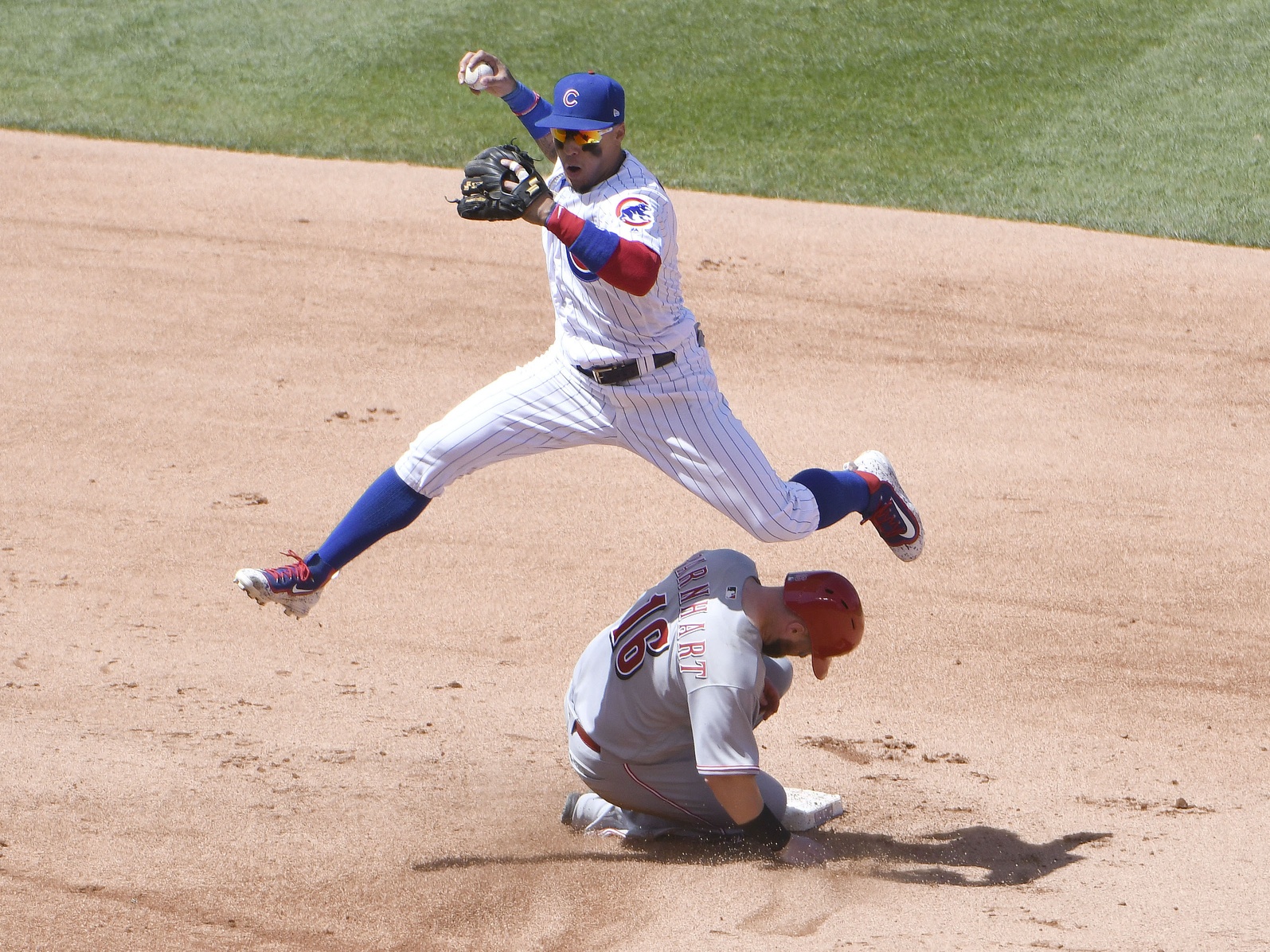
Typically we find in that a normal distribution fit is a pretty good representation of this type of sports data. For those of you familiar with how the 20-80 scale works, each 10 points away from 50 is supposed to represent one standard deviation away from the average player. Overlayed on top of the data are data bands representing the Mean (Roughly 1.5 WAR) and bands representing 3 standard deviations in either direction from the mean. These stats are better at telling you about the past than the future, but can be informative about true talent if used properly.Below I've pasted an image showing a slightly incomplete WAR analysis for the 2048 WBL.Sample sizes are usually pretty small for the difficult plays.Batted balls are tracked based on how often they are turned into outs.Making a 1-10% play doesn’t make you a good fielder, it means you made at least one difficult play. Use these numbers as a guide to understand the players’ seasons, but be careful when you are making inferences about their abilities because the data is imperfect and the samples are small. As a result, there are margins of error around all of these numbers. Also, there is measurement error involved in these stats, and you can’t be sure that a 10-40% play is truly a 10-40% play with 100% certainty. Succeeding on a few tough plays is possible for bad fielders and missing a few easy plays is possible for good fielders. Making four 10-40% plays in four changes might look impressive if you see the 100% value, but it’s likely that four plays is not a large enough sample to indicate true talent. However, you have to be careful because except for the 90-100% category, the sample sizes are very small. Inside Edge lets you track that more easily than the high level stats which only show you run values. Some players have tremendous range but fail to execute easy plays. Some fielders are good at making the easy plays but don’t have range. Inside Edge Fielding stats are useful in the sense that they allow you to get a sense of the type of fielder you’re dealing with. Inside Edge Fielding stats allow you to parse some of this out. The key is that all defensive misplays are not the same, when some stats liked defensive efficiency and RZR treat them all alike. If a player misses a bunch of Almost Certain plays, he may be a bad defender, but he might also have been unlucky. If a fielder makes a bunch of 1-10% plays, it’s probably a safe bet that he has some exceptional raw ability. Second, Inside Edge gives you an idea of what type of plays a given player succeeds on or struggles with. First, Inside Edge operates separately from Baseball Info Solutions (the company that tracks the other two metrics), which allows you to perform a sanity test of either stat because they are not collected by the same people.

As a result, the stats provide added value to you in two ways.

Inside Edge Fielding stats break out the data based on the difficulty of the play, but do not consider the run values. DRS and UZR are two stats that measure defensive value based on those variables. The modern way we measure defense is based on the difficulty of the play and the run value of the batted ball.

This data is available dating back to 2012. These are also the stats that populate the Spray Charts for fielders, so you can view them visually as well. So for example, if a player has been hit 40 “Likely” balls and has made 35 plays on those 40, they would have a “Likely” rate of 87.5%.

Those plays are grouped into six bins:Īt FanGraphs, we track the number of balls hit to a player at each difficulty and the percentage of those plays they made in the given season. In a basic sense, each play is rated based on how often a player at that position has made a very similar play. Inside Edge Fielding stats are, like the name indicates, tracked by Inside Edge and their particular methodology is not publicly information. There are six categories of plays based on how often a fielder at that position would make the play in question.ĭefensive value can be difficult to measure, but Inside Edge Fielding stats offer an additional way to evaluate what is happening on the field. Inside Edge Fielding is a set of statistics that measures how often a player has made a defense play of a particular difficulty.


 0 kommentar(er)
0 kommentar(er)
